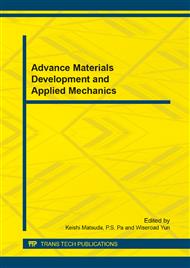p.515
p.521
p.525
p.531
p.535
p.540
p.544
p.551
p.557
Multi-Objective Optimization for the Section Structure of Sandwich Plate Applied in the High-Speed Train Compartments
Abstract:
In order to obtain the side walls section structures of high speed train applicable to different running speeds and conditions, a multi-objective optimization design is made based on the structure of topology optimization. In this optimization formulation, the weight of sandwich plate, static compliance and maximum deformation are used as the objective functions; the thickness of face panels and cores in five parts of the side wall are variables; and the air pressure gradient in compartments is the constraint function. Surrogate model techniques are adopted for constructing the response surfaces based on the optimization. Finally, a multi-objective optimization is performed using the NSGA-II algorithm and the optimization generates a Pareto solution set. The structure performance in Pareto set is greatly improved by 8.21% -33.58% than that of topology structure. In addition, the Pareto solution set provides engineers with many alternative Pareto-optimal solutions for optimization design of the sandwich plate section applied in the high-speed train.
Info:
Periodical:
Pages:
535-539
Citation:
Online since:
July 2014
Authors:
Price:
Сopyright:
© 2014 Trans Tech Publications Ltd. All Rights Reserved
Share:
Citation:


